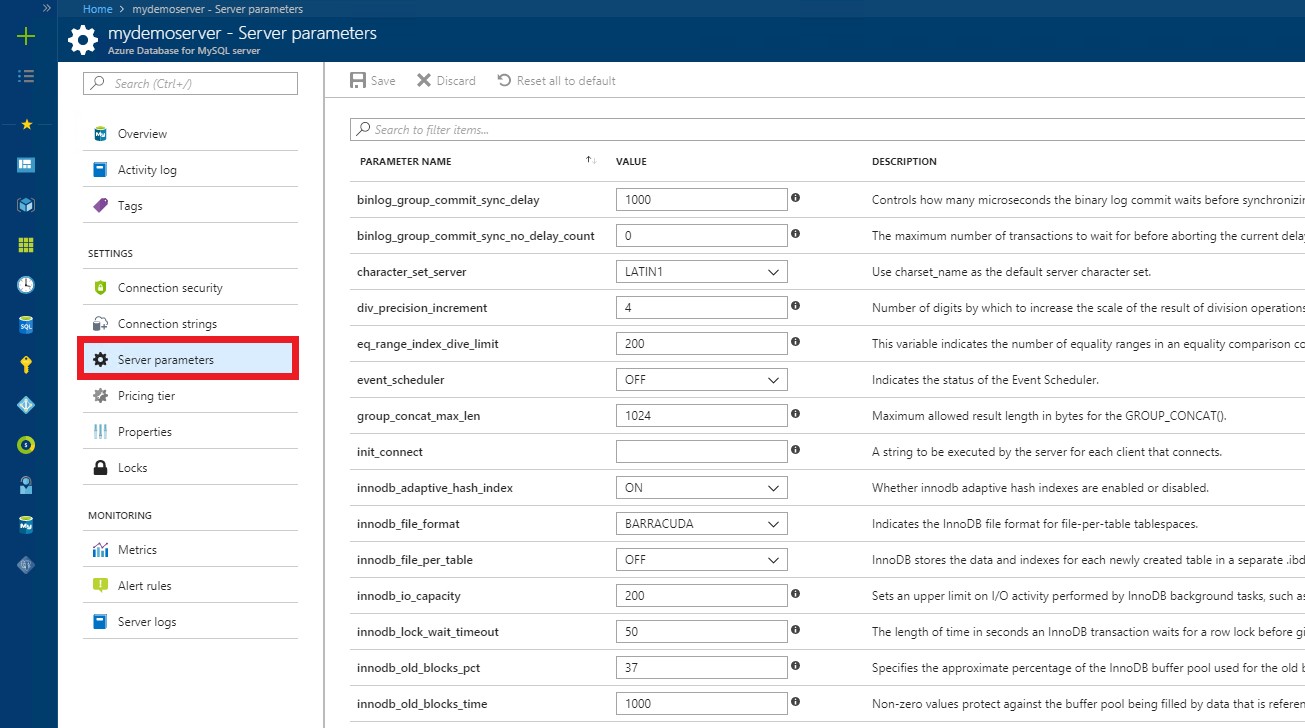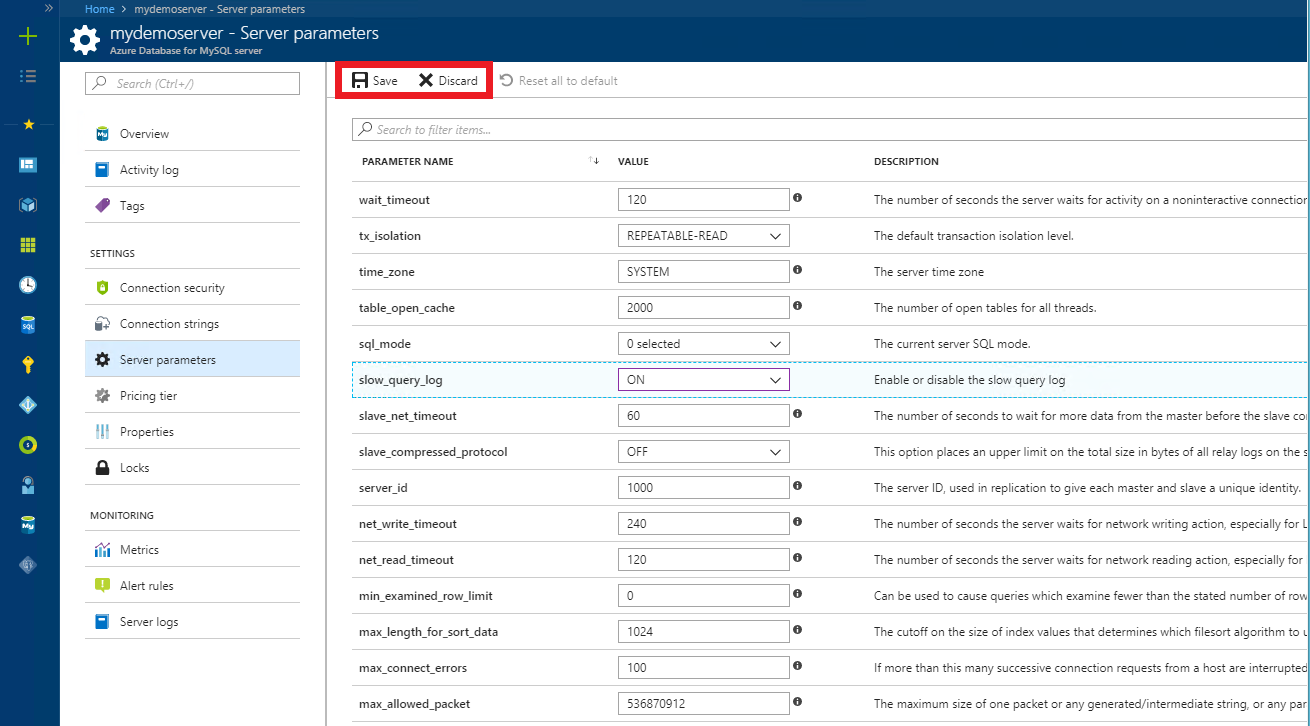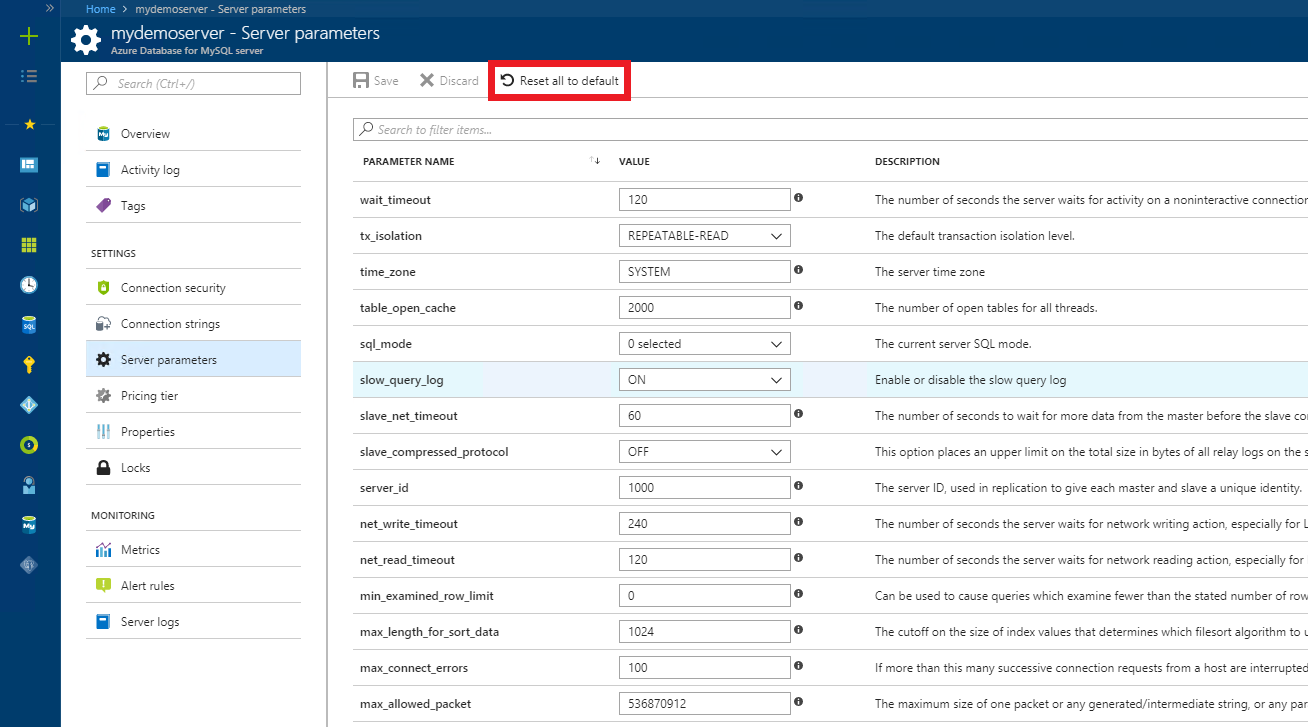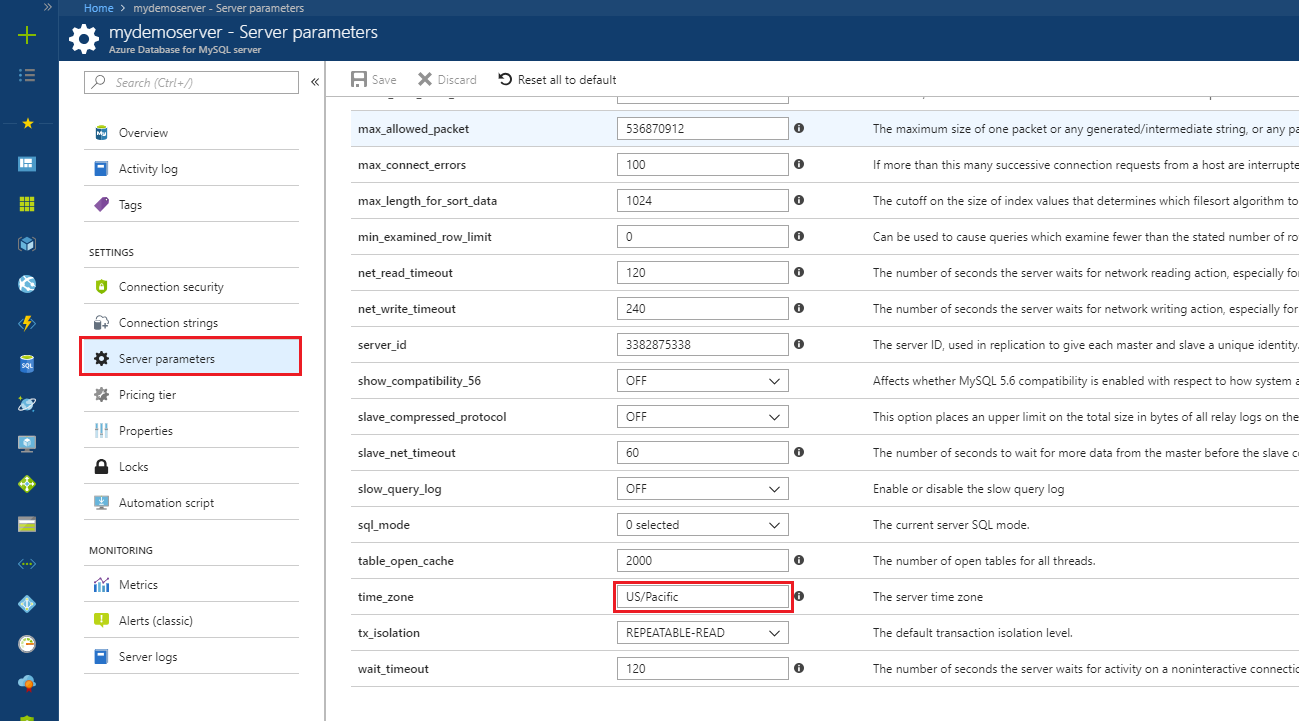Configure server parameters in Azure Database for MySQL using the Azure portal
APPLIES TO:  Azure Database for MySQL - Single Server
Azure Database for MySQL - Single Server
Important
Azure Database for MySQL single server is on the retirement path. We strongly recommend that you upgrade to Azure Database for MySQL flexible server. For more information about migrating to Azure Database for MySQL flexible server, see What's happening to Azure Database for MySQL Single Server?
Azure Database for MySQL supports configuration of some server parameters. This article describes how to configure these parameters by using the Azure portal. Not all server parameters can be adjusted.
Note
Server parameters can be updated globally at the server-level, use the Azure CLI, PowerShell, or Azure portal.
Configure server parameters
- Sign in to the Azure portal, then locate your Azure Database for MySQL server.
- Under the SETTINGS section, click Server parameters to open the server parameters page for the Azure Database for MySQL server.

- Locate any settings you need to adjust. Review the Description column to understand the purpose and allowed values.

- Click Save to save your changes.

- If you have saved new values for the parameters, you can always revert everything back to the default values by selecting Reset all to default.

Setting parameters not listed
If the server parameter you want to update is not listed in the Azure portal, you can optionally set the parameter at the connection level using init_connect. This sets the server parameters for each client connecting to the server.
Under the SETTINGS section, click Server parameters to open the server parameters page for the Azure Database for MySQL server.
Search for
init_connectAdd the server parameters in the format:
SET parameter_name=YOUR_DESIRED_VALUEin value the value column.For example, you can change the character set of your server by setting of
init_connecttoSET character_set_client=utf8;SET character_set_database=utf8mb4;SET character_set_connection=latin1;SET character_set_results=latin1;Click Save to save your changes.
Note
init_connect can be used to change parameters that do not require SUPER privilege(s) at the session level. To verify if you can set the parameter using init_connect, execute the set session parameter_name=YOUR_DESIRED_VALUE; command and if it errors out with Access denied; you need SUPER privileges(s) error, then you cannot set the parameter using `init_connect'.
Working with the time zone parameter
Populating the time zone tables
The time zone tables on your server can be populated by calling the mysql.az_load_timezone stored procedure from a tool like the MySQL command line or MySQL Workbench.
Note
If you are running the mysql.az_load_timezone command from MySQL Workbench, you may need to turn off safe update mode first using SET SQL_SAFE_UPDATES=0;.
CALL mysql.az_load_timezone();
Important
You should restart the server to ensure the time zone tables are properly populated. To restart the server, use the Azure portal or CLI.
To view available time zone values, run the following command:
SELECT name FROM mysql.time_zone_name;
Setting the global level time zone
The global level time zone can be set from the Server parameters page in the Azure portal. The below sets the global time zone to the value "US/Pacific".

Setting the session level time zone
The session level time zone can be set by running the SET time_zone command from a tool like the MySQL command line or MySQL Workbench. The example below sets the time zone to the US/Pacific time zone.
SET time_zone = 'US/Pacific';
Refer to the MySQL documentation for Date and Time Functions.
Next steps
Feedback
Coming soon: Throughout 2024 we will be phasing out GitHub Issues as the feedback mechanism for content and replacing it with a new feedback system. For more information see: https://aka.ms/ContentUserFeedback.
Submit and view feedback for